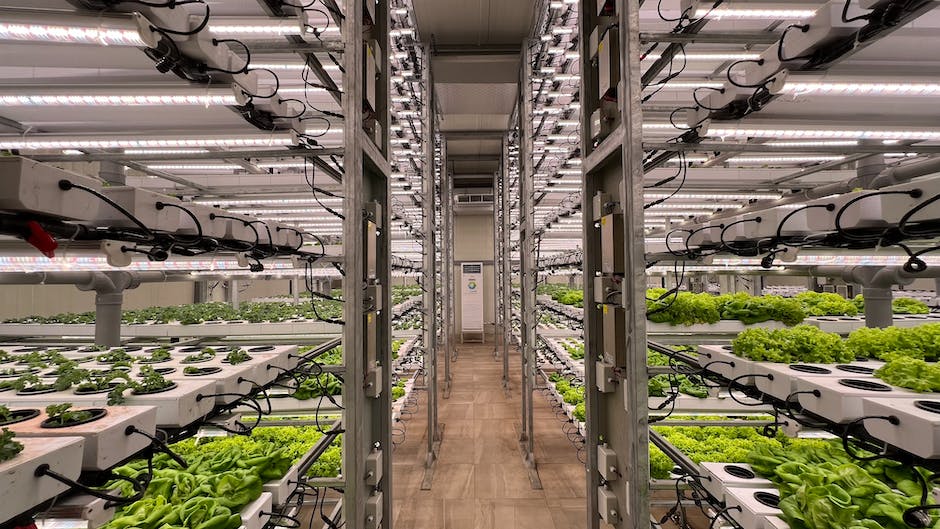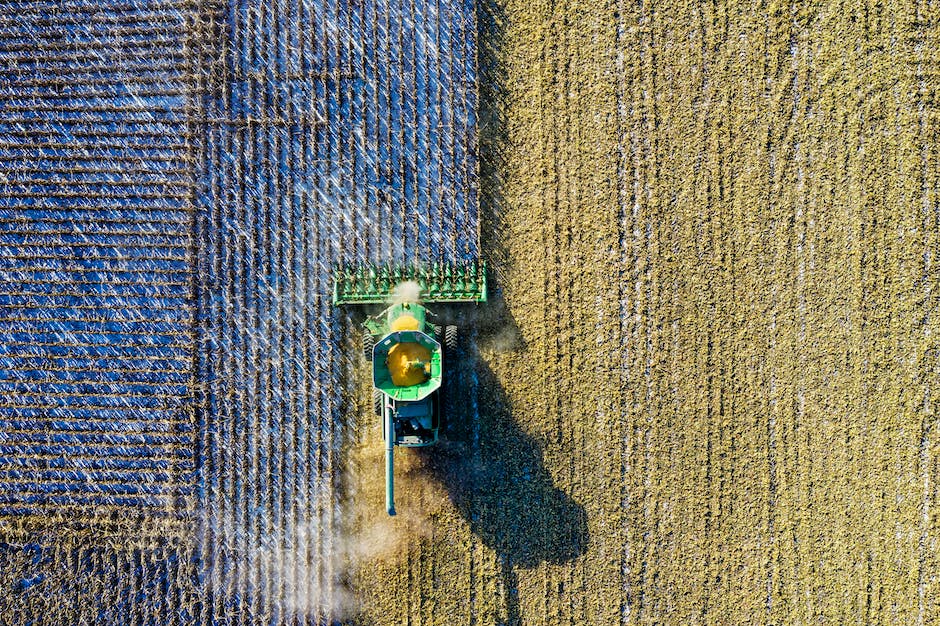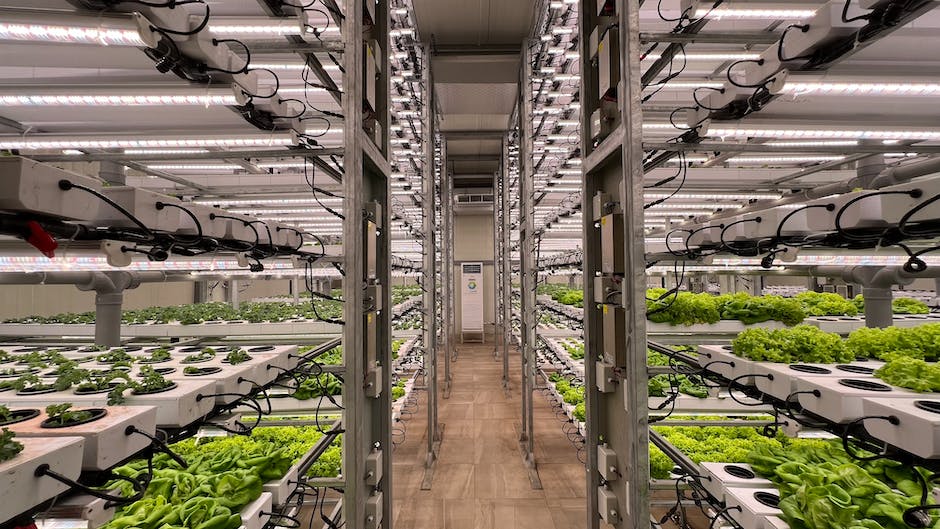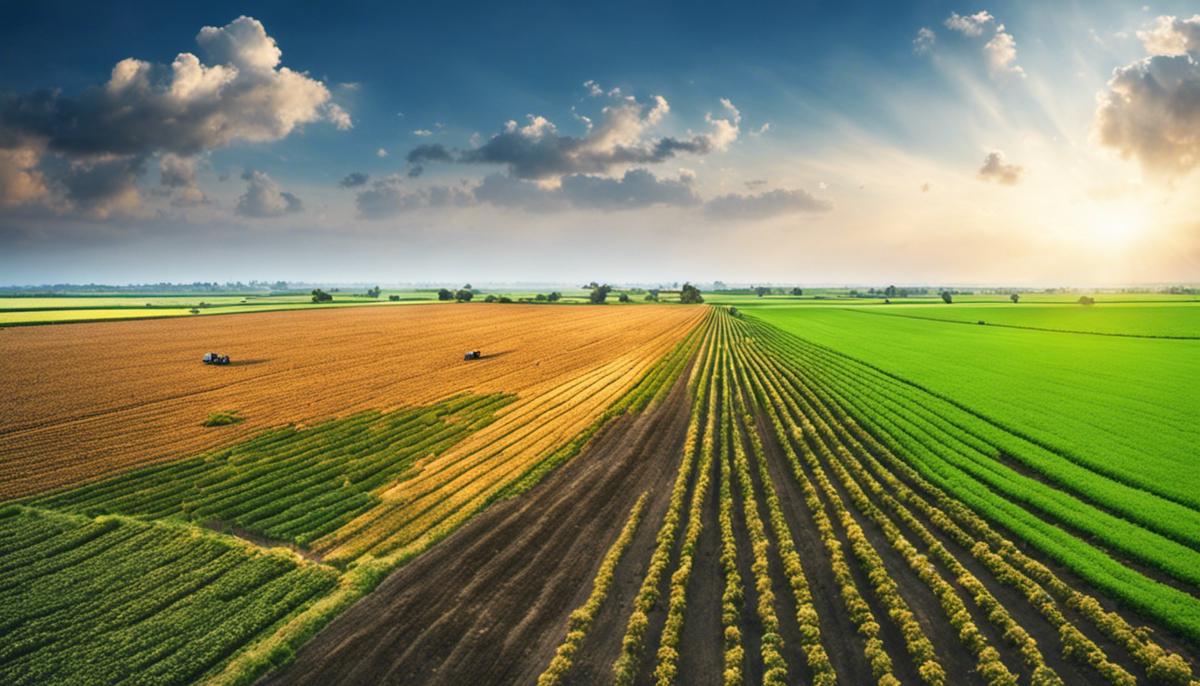

Agridisk
Egypt - Alexandria

5 Key Secrets to Watch in AgriTech in 2023
Description: In the face of the worldwide challenges presented by rapid climate change, a global population on the rise, and the need to preserve biodiversity, agriculture finds itself at a critical point. An industry historically steeped in tradition is now set to be revolutionized by a myriad of emerging technologies. This piece dives into the technologies innovating the agricultural sphere, ranging from Artificial Intelligence (AI), Internet of Things (IoT), and drones, to data science and biotechnology. We delve into how these tools are not only increasing productivity but also building a framework for climate-intelligent farming. Furthermore, the societal and economic impacts of these technological advancements will be examined, providing a comprehensive understanding of how this reliance on modern, cutting-edge technology is moving agriculture into a new era. In the year 2023, agriculture has experienced extraordinary enhancements due to the interaction of technology, fostering a prodigious boost in productivity. This article explores the arena of technological advancements that are revolutionizing the agricultural sector, making it more efficient and resilient than ever before. One ground-breaking development is a class of drone technology, often referred to as 'Precision Farming Drones'. These autonomous flying devices are outfitted with advanced data collection and analytical instruments, leading to optimized use of resources and increased crop yield. They systematically analyze field conditions, evaluating factors like plant health, soil quality, and hydration levels. By providing farmers with real-time, detailed aerial views and biodiversity data, redundant planting areas and uneven crop watering are successfully mitigated. In the realm of biotechnology, CRISPR gene-editing techniques have been perfected and are now widely applied in crop genetic modifications. With enhanced precision, efficiency, and safety, these techniques facilitate the development of crops resistant to insects, diseases, and harsh weather conditions - minimizing losses and maximizing productivity. Additionally, the increased efficacy of artificial intelligence (AI) and machine learning algorithms is a paramount trend in agricultural productivity. They are used in creating predictive models for weather patterns, crop yield, and disease spread - allowing farmers to prepare and optimize their actions based on these predictions. Furthermore, AI-driven robotics presents a surge in productivity by achieving tasks such as harvesting, planting, and weeding at an accelerated pace - they operate round the clock with uncanny accuracy and efficiency. Internet of Things (IoT) technologies are also penetrating the agriculture industry. IoT-enabled sensors and devices monitor, control, and automate a multitude of farming processes. From soil moisture sensors ensuring optimal irrigation, to livestock wearable devices monitoring health and productivity, each process is honed to perfection. Significant advancements are also made in vertical and indoor farming setups, running on hydroponics, aeroponics, and other soil-less farming techniques. These systems powered by optimized LED lighting technology are programmable, requiring less water and space while averting weather-related crop damage. The automation of these systems is enhancing productivity by enabling year-round production, regardless of the exterior conditions. Finally, blockchain technology's entry into agriculture emerged as a productivity booster. By providing transparency, traceability, and efficiency in supply chain management, it reduces waste and ensures that the freshest produce reaches the consumers efficiently. These latest technological advancements are revolutionizing agriculture, mirroring an era of unparalleled productivity and resilience within the sector. In embracing these technologies, society moves toward realizing a future of boosted productivity and environmentally sustainable agricultural practices. Truly, a testament showing that science intricately intertwined with nature, can pave the pathway toward innovation and ultimate productivity. There is an incredible revolution occurring in agriculture. Not only is it facilitating our push for sustainability, it is concurrently poised to ameliorate many of the pressing challenges presented by climate change. Conquering the drawbacks of traditional agricultural methods, innovations are driving unprecedented yield improvements, enhancing utility efficiency and adapting at breakneck speed to unpredictable shifts in environment. One of the more recent forays in agritech revolves around utilizing bioenergy for agricultural purposes. Bioenergy crops such as switchgrass and miscanthus serve dual functions: producing energy and acting as carbon sinks for mitigating greenhouse gas emissions. Extraction of energy from these crops is achieved through processes like anaerobic digestion or direct combustion. This energy is subsequently utilized in various farming activities, mitigating dependence on non-renewable sources and substantially reducing carbon footprints. Adaptive irrigation stands as another breakthrough; a testament to the ingenuity of today's scientists. Rather than following defined schedules, these irrigation systems take into account specific soil characteristics, weather predictions, and plant water requirements. Sensors embedded in the field communicate with irrigation controllers, allowing them to adjust the water supply in real-time. This sort of precision navigation optimizes water use, reduces waste, and bolsters sustainability efforts in the face of uncertain precipitation patterns. In a bid to combat flocculation and erosion – common issues exacerbated by intense climate alterations – there has been a strategic shift towards the usage of cover crops. This agrarian practice offers a trifecta of benefits: improvement of soil health, reduction of water and wind erosion, and sequestration of carbon dioxide. Anchoring the soil with their roots, cover crops prevent nutrient leaching during heavy rains and supplement the soil with organic material during their growth period. Agricultural biotechnology also finds a rightful place in this discourse of innovation. Nitrogen fixation techniques, a quintessential example, change the game in more ways than one. These procedures exploit the symbiotic relationship between legumes and Rhizobia bacteria, minimizing the necessity of synthetic fertilizers and curtailing nitrogen runoff - a masterstroke in sustainability. Technologically-enabled supply chain management, astutely aided by Robotics Process Automation (RPA), propels an efficient and more responsible agricultural economy. Processing tasks - from planting to packaging – are automatable and timed perfectly. The consequential reduction in earliness and tardiness penalties enhances productivity and diminishes waste, amplifying the benefits to both the environment and the farming sector. Agriculture in 2023, arguably, shares virtually no semblance with its 20th century counterpart. The quantum leap forward due to technologies as far-reaching as bioenergy and as precise as robotic process automation is remarkable. As we grapple with the reality of climate change, agritech emerges as a beacon of adaptation and resilience, safeguarding both our food future and the environment. The marriage of agritech and sustainability holds manifold promises for us and for generations yet to reap its benefits. The intersection of biotechnology and agricultural practices in 2023 has been nothing short of transformative, forging a novel trajectory in agritech and farm management that shifts the modality from intensive to intelligent. In continuation to what’s articulated before, we delve deeper into this progressive spectrum which navigates us through bioenergy crops, adaptive irrigation, cover crops, nitrogen-fixation, and advances in supply chain management. Bioenergy crops serve a dual-purpose in this progressive era, not just by producing energy but also by mitigating the detrimental effects of greenhouse gas emissions. This model employs crops such as switchgrass, miscanthus, and willow trees, which possess high per unit biomass output, generating biofuels and biochemicals. Simultaneously, these crops form intricate root systems which successfully sequester carbon from the atmosphere, mitigating atmospheric concentrations of potent greenhouse gases, such as carbon dioxide. In parallel, adaptive irrigation systems exemplify ingenuity through dynamic and real-time adjustments of water supply. Entirely data-driven, they marry the conductive properties of the soil, predictive weather algorithms, and geospatial crop responses to ensure every drop of water is optimally utilized, conserving water and simultaneously improving crop yields. Moreover, leveraging the inert benefits of cover crops, including certain legumes and grass species, in combating soil flocculation, erosion, and improving carbon sequestration is a small yet significant step towards agroecological sustainability. They improve soil's physical structure, boost its organic matter content, encourage beneficial soil biology, and indirectly enhance the yield and quality of cash crops that follow them in rotation. The era of 2023 has also revisited previously challenging impediments in agricultural practices, including intensive and unsustainable use of synthetic fertilizers. This year marks a substantial breakthrough with the deployment of nitrogen-fixation techniques achieved through advanced genetic engineering. The incorporation of nitrogen-fixing bacteria into non-legume crops, such as wheat and corn, has enabled these crops to draw essential nitrogen directly from the atmosphere, drastically lowering the dependency on synthetic fertilizers and benefiting the environment in the process. Finally, the amalgamation of Robotics Process Automation (RPA) in supply chain management has promulgated efficient and responsible agricultural processes. Agricultural RPA simplifies repetitive and mundane tasks, correlates and interprets complex datasets, providing a seamless logistical flow, which reduces waste, optimizes resource use, and fosters optimum economic results. The roadmap of agritech in 2023 is evidently an inspiring narrative of transformation, effectively leveraging the synergy of biotechnology and data-driven technologies. Agricultural practices have thus adapted resiliently to the challenges imposed by climate change and have endeavored fiercely towards promoting global sustainability. Building on these notable innovations in the agritech landscape, data science has proven to be central to the development and effective implementation of scientific advancements in digital farming. This discipline, colloquially referred to as the "oil" of the digital age, has enriched the analysis, interpretation, and decision-making processes tied to agricultural outcomes, propelled forwards by a growing need for more efficient and sustainable farming methods. One particularly consequential contribution of data science within the agricultural sphere is the enhancement of the genetic improvement of crops. Though CRISPR gene-editing has been mentioned, the focus here is on Genomic Selection, a breeding method based on the use of molecular markers. By analyzing large datasets of genetic and phenotypic information, data scientists can model the performance of different genotypes in various environmental conditions. This ensures the optimization of the plant’s genetic potential, leading to a more resilient and efficient crop production. Similarly, data science is a cornerstone in advancements concerning pest monitoring and management systems. The ability to collect and analyze vast amounts of data has incited the development of dynamic pest prediction models. The continuous accumulation and analysis of data on pest populations, weather conditions, and crop susceptibility allows these systems to anticipate pest infestations and recommend timely and precise control measures. Moreover, data science has revolutionized complex farming systems through the deployment of Advanced Analytics. Techniques such as pattern recognition, geospatial analysis, and complex event processing have delivered informative insights into land utilization patterns, farm productivity, and growth performance. These analytics ensure smarter farming practices, ultimately leading to optimized resource utilization and increased agricultural yield. Furthermore, the implementation of Cloud-Based Farm Management Systems should not be underestimated. These platforms unify and store a broad range of data points – from soil and weather data to crop health information – centralizing them for convenient access and analysis. Farmers can thus ensure the most accurate, real-time decisions regarding their agricultural operations. This centralized insight not only streamlines farm management but also reduces margin for error, enriching overall farm productivity and profitability. Noticeably, advances in Quantum Computing have sparked considerable interest in the academic and practical field of agritech. This revolutionary computational technology provides unmatched processing power, enabling comprehensive analyses of extensive databases in a fraction of time conventional computational methods would require. In the context of digital farming, this could potentially expedite the solutions for complex tasks, such as genomic analyses, climate modeling, and nutrient planning. In conclusion, data science has emerged as a robust pillar upholding the modern-day agritech landscape. The ability to extract actionable insights from a vast array of data points is a boon to farmers, data scientists, and everyone in between – ultimately fostering optimization, sustainability, and resilience in agricultural practices. These strides of progress shed an optimistic light on a future of digital farming that is rooted in data-driven decision-making, ensuring mankind's most ancient occupation remains ever-revolutionary in the face of changing global conditions. This ever-evolving field of Agritech has far-reaching implications on society and economies, globally. Understanding the impact requires an appraisal of advanced agricultural technology from a macroscopic viewpoint. It shapes society's relationship with food and the environment, while also having a momentous effect on global economies. In the societal context, the fusion of technology and agriculture has brought a significant shift in the narrative regarding food security. Food scarcity, once considered a heart-wrenching reality in many parts of the world, is gradually transitioning into a less ominous proposition, thanks to agricultural technology. For instance, the implementation of advanced data science and genomic selection in crop improvement has unlocked the potential of high-yielding, drought-resistant, and pest-resilient varieties of crops. Furthermore, pest monitoring and management systems, fortified by data analytics, are effectively mitigating substantial crop loss due to pest infestation. These influential strides in Agritech have asserted a profound influence on the economical spheres as well. A case in point is cloud-based farm management systems. Streamlining farm processes and centralizing data storage and analysis, these systems augment productivity while reducing overhead expenses. The result is an improved profit margin for farmers and affordable food prices for consumers. Looking ahead, as quantum computing finds its footing in Agritech, the implications could be revolutionary. Considering its prowess in solving complex problems and large-scale simulations, quantum computing holds the potential to bring a paradigm shift in tackling pressing issues like climate adaptation and achieving sustainability goals in agriculture. Moreover, the end-to-end digitization of agriculture, from cultivation to supply chain processes, could unlock new market opportunities, fuel economic growth, and enhance global trade. Particularly, the trend of using Robotics Process Automation in supply chain management not only advances efficiency but also instills a higher level of responsibility in the processes, promoting a resilient and socially conscious agriculture ecosystem. There is no denying the dual narrative of advancing technology: while it unravels new possibilities, it also raises new challenges. Nevertheless, the advancements of agricultural technology in 2023 have undoubtedly strengthened global agriculture's resilience, offering a more sustainable, optimized, and hopeful vista for a world constantly grappling with environmental and socio-economic uncertainties. However, mapping the future trajectory of Agritech mandates not only continued innovation but also a balanced understanding and action to rightly harness its potential. The journey of agricultural technology, from tilling the first soil to the most advanced agritech practices, certifies humanity’s commitment to adaptation and survival, one harvest at a time. As a dynamic industry, agriculture's transformation under the powerful influence of technological advancements holds far-reaching implications for socioeconomic and environmental factors worldwide. The introduction of these technologies, such as AI, IoT, drones, and data science reveals a complex interplay between efficiency, productivity, and sustainability. We walk a fine balance between realizing the profound potential these advancements offer for boosting productivity, alleviating poverty, and economically rejuvenating rural societies while also acknowledging the potential setbacks, including job displacement caused by automation. Nonetheless, the future of agriculture artfully intertwines with technology, and this symbiosis promises to be transformative, generating solutions that could redefine our entire food system for a more sustainable future. Agricultural technology is constantly evolving, and very quickly updating its tools, due to the enormity of its project, it needs a lot of time and great care, so technology works to accelerate and improve the performance of the agricultural process, and in this article we give you today the best important technologies to help farmers increase yields Agricultural crops, fields and soil health to ensure a successful and profitable crop for farmers and crop owners. The supplier must be aware of the best supply methods through which farmers can predict when agricultural operations will occur and the best ways to achieve the best production. The owner of the agricultural project must be constantly informed of the best methods and means of agricultural production, and modern tools for agriculture, through which he can increase production in a way that greatly serves the farmer and agricultural officials.Technological Innovations Driving Agricultural Productivity
2023: Unveiling the Latest Tech Advancements Enhancing Agricultural Productivity

Climate Intelligent Agriculture
The Cutting-Edge Fusion of Agritech and Sustainability Amid Progressive Climate Changes in 2023

Biotech in Agriculture

Digital Farming and Data Science in Agriculture

Social and Economic Impacts of Agricultural Technology

1- Follow-up agricultural compatibility between agricultural tools
2- Crop protection and biofertilizers
3- Knowledge of the best supply methods for agricultural crops
4- Buy the latest and best tools for agricultural production
5- The use of artificial intelligence in agricultural production